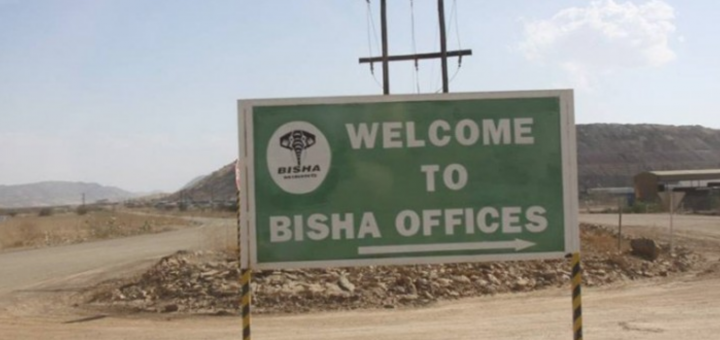SCC to Consider Multinational Corporate Accountability in Araya v Nevsun: A Q&A with Plaintiffs’ Counsel

In January 2019, the Supreme Court of Canada (“SCC”), will be hearing an appeal of Araya v Nevsun, 2017 BCCA 401 [Nevsun], which involves a group of Eritrean plaintiffs who filed a claim for damages at the Supreme Court of British Columbia (“BCSC”) against Nevsun Resources Ltd. (“Nevsun”), a Canadian mining company based in Vancouver, for gross human rights abuses at its Bisha Mine in Eritrea. The plaintiffs claim that Nevsun, through its Eritrean subsidiary, the Bisha Mine Share Company and in complicity with the government and military of the state of Eritrea, committed gross human rights violations at the mine, including slavery, torture, forced labour, and crimes against humanity. Nevsun denies the allegations and maintains that it cannot be held liable for any of the abuses at the mine as the Bisha Mine was owned and operated by its subsidiary.
The parties in Nevsun characterise the issues very differently. At the BCSC, counsel for Nevsun argued that the case was “all about state actions,” that the primary tortfeasores were “state actors,” and that the sovereignty of Eritrea, an independent state with which Canada has diplomatic relations, is under direct attack in the proceeding. Nevsun’s counsel also argued that, because any wrongs on Nevsun’s part would be “derivative” and “accessory” to the wrongful conduct of Eritrean state actors at the Bisha Mine, Nevsun would only be exposed to liability if Eritrean state actors were found liable.
The plaintiffs, on the other hand, argued that the case was not based on the conduct of Eritrean state actors, but rather on Nevsun’s alleged complicity in serious breaches of human rights. The claim of complicity between Nevsun and the state of Eritrea stems from one of the central facts in the case – an Eritrean national service requirement that officially compels all citizens over 18 to undertake 18 months of mandatory military training, but in practice has been extended into an indefinite program of compelled, unwaged labour, in not just the military but any industry. The International Labour Organisation has denounced the practice as forced labour, and the United Nations has concluded that it amounts to enslavement and a crime against humanity.
The plaintiffs allege that conscripts including the plaintiffs were forced to build and operate the Bisha Mine. As a result, from 2008 when construction began on the Bisha Mine, the plaintiffs argued Nevsun entered into a commercial relationship with the state of Eritrea by engaging construction companies that used national service conscripts, and they subjected them to forced labour, slavery, torture, and crimes against humanity.
The plaintiffs also base their claim on violations of customary international law, a novel argument in Canada. Customary international law, and in particular its overriding principle of jus cogens, includes prohibitions against human rights abuses. (Jus cogens refers to peremptory norms from which the law allows no derogation.) However, many rules of international law bind states only. A further foundational concept of international law includes the principle of state sovereignty, which holds that, short of crimes against jus cogens, states may do as they like within their sovereign borders. The plaintiffs argue, however, that the case is not about state actions but rather the actions of a corporation, and that the prohibitions under jus cogens against the most serious violations of human rights apply without exceptions.
Ahead of the case going before the SCC in January, we spoke with one of the counsel for the plaintiffs, Mr. James Yap. The following is what he told us.
What are the main challenges for plaintiffs in cases like this?
There are three main legal challenges in bringing these kinds of cases to court for the plaintiffs. One is jurisdiction, because Canadian courts have often been reluctant to hear claims which involve events that have occurred in another country. There are many mechanisms defendants can use to have such claims dismissed by the court on jurisdictional bases. In this case, for instance, the defendants filed a motion under the forum non conveniens doctrine.
Another barrier is the doctrine of separate corporate personality, because a lot of Canadian companies operating overseas, including Nevsun, operate through subsidiaries. Each of these subsidiaries is considered a separate person and legal entity. Under the doctrine of separate corporate personality, a parent corporation is not, without more, held liable for legal obligations incurred by its subsidiary, and so Canadian parent companies often argue that the acts that form the basis of a claim were the acts of a subsidiary and are not attributable to the parent.
A third major barrier is limitation periods. Generally, in Canada, limitation periods are two years and it can be very difficult if not impossible to investigate, prepare, and file a case of this kind within the two-year limitation period. Remember, affected communities are often isolated and do not have access to resources or services, like legal advice. They may not even know that it is possible to file a claim in Canada. It therefore takes a remarkable set of circumstances for a claim to be filed within the limitation period. Otherwise, plaintiffs must attempt to invoke one of the good number of exceptions that are available to get around the two-year limitation period.
These are the legal barriers [against plaintiffs bringing cases like Nevsun to courts]. And in the past in Canada, when these claims have been filed, many have been stopped at the jurisdictional level, which means they didn’t even get to the point where they were heard in court. So, there have in the past been very formidable barriers but we think in this case, we have good arguments to make on all these issues. [Nevsun is no longer arguing for the case to be dismissed under the forum non conveniens doctrine, after the BCSC and the BCCA dismissed these arguments.]
Aside from the legal barriers though, there are also logistical challenges in litigating these kinds of cases. For instance, one challenge in this case is that we have no ability to access witnesses located inside Eritrea due to the repressive government there. Further, the plaintiffs we do have are scattered across many different countries, often as refugees in very precarious and vulnerable situations such as refugee camps. Canadian lawyers, and Canadian courts, are not accustomed to working through the difficulties that such a situation presents.
What is the act of state doctrine?
The act of state doctrine is a doctrine from England and the United States. This is the subject of the first motion in this case, the first issue that will be decided by the Supreme Court of Canada. It’s a doctrine from English and American law that the defendant is trying to introduce into Canada. The basic principle is that a domestic court should respect the laws and legal acts of a foreign country.
For instance, the paradigmatic application of the doctrine is where there is a governmental expropriation of property in another country. That property comes to be located within the domestic court’s jurisdiction. Someone files a claim saying that that property rightfully belongs to them. In that situation, the domestic court would say that perhaps the foreign expropriation law was unfair, but it was nonetheless a valid exercise of that foreign country’s sovereignty. So, as a sovereign act, it cannot be called into question.
In this case, the defendant is attempting to argue that the acts alleged constituted lawful acts of the Eritrean government in exercise of its sovereign powers. The argument is that those acts are therefore not subject to review by Canadian courts.
What is the act of the sovereign state in this case, to be clear?
The act of state that the defendant is invoking here is the Eritrean national service program, as well as the various acts of torture that are committed in connection with it.
What is the argument against the acts being sovereign acts of the Eritrean state?
There are a few questions at stake here. The first of course is whether the act of state doctrine exists in Canadian law at all. If it does, it may be considered that the acts alleged constitute valid, lawful sovereign acts on the part of the state of Eritrea. However, even if they do, there are three exceptions to the act of state doctrine. The first is a public policy exception. The act of state doctrine does not recognise a foreign governmental act as a valid sovereign act if it consists of a violation of fundamental norms of public policy. The second is a commercial activity exception. A governmental act in a furtherance of a commercial purpose is not considered a sovereign act. It is, rather, considered a commercial act. The third exception, often called the Kirkpatrick exception, states that the act of state doctrine only applies if the claim challenges the actual validity and effect of the foreign sovereign state’s act. All of these issues are being raised in this appeal.
How would the Kirkpatrick exception apply in this case?
Going back to the expropriation example, by analogy, let’s say there is a theoretical claim seeking to reverse the foreign country’s expropriation of property, to transfer the property to someone else. That transfer would have the effect of essentially reversing the effect of the foreign government’s act. The question here is whether holding Nevsun liable for acts of slavery, torture, forced labour, and crimes against humanity would have the same effect of reversing or undoing the act of a sovereign state.
I understand the plaintiffs’ cause of action in this case is partly grounded in customary international law. Can you tell me more about that, including how novel such an argument is in Canadian law?
This is the subject of the second motion. Certain claims in this case are based in rules of customary international law. These rules include prohibitions against slavery, torture, force labour, and crimes against humanity.
In the pleadings, we alleged several traditional established common law torts such as negligence and battery, which any lawyer will be familiar with. But we also pleaded that the Canadian court should recognise certain novel torts based in rules of customary international law.
This argument is based on the common law doctrine of adoption, which was most recently affirmed by the SCC in R v Hape, 2007 SCC 26. The doctrine of adoption states that rules of customary international law are automatically incorporated into domestic common law. Our argument is that this provides a basis to say that violations of the customary international law prohibitions against slavery, torture, force labour, and crimes against humanity should be civilly actionable as standalone torts under the common law. This is a novel argument. And what Nevsun has argued is that they cannot be held liable in such a way and that we must be confined to the traditional common law torts.
Can you tell me more about their argument?
They are arguing that there is no need for these torts, and that it should be left to the legislature to create such torts. They’re also arguing that such torts are the subject of criminal prohibitions and, as such, cannot be the subject of civil liability. They’re arguing that customary international law is not automatically adopted in the common law and if it is, it does not give rise to civil liability. They also base their argument in various structural and philosophical aspects of international law itself, such as whether international law accommodates principles of civil liability and in particular corporate liability.
What attracts you to this case as a lawyer?
This is a fascinating case because this topic about transnational human rights responsibilities of business is a very current one. There is a lot of international discussion currently about what John Ruggie called “governance gaps.” What he refers to with this term is the gap between the ability of powerful, mostly-Western corporations to operate easily across international boundaries on the one hand, and on the other the ability of currently-existing regulatory mechanisms to effectively regulate their activities. Right now, there is perceived to be quite a large gap and there is a lot of discussion about what to do to close it. What John Ruggie suggests is that the solution will be multifaceted in that it will involve three main pillars. It will involve governments taking action to protect human rights, it will require corporations to take measures of their own accord to respect human rights, and it will require mechanisms to allow affected individuals and communities to have access to a remedy and have some sort of agency in the whole process as well.
This lawsuit has interesting implications for the third”access to remedy” pillar and so for this reason, it has attracted a lot of attention internationally.
Are there any similar cases in other countries?
There are many cases in the UK and the US that raise the question of corporate legal accountability for transnational human rights violations. One example is an appeal of a case called Vedanta [Lungowe v Vedanta Resources plc, [2017] EWCA Civ 1528] that will be heard at the UK Supreme Court the week before the SCC hearing in Nevsun. That case will address the second legal challenge I mentioned earlier, the challenge of separate corporate personality. Or rather, the challenge of liability for corporate parents for the acts of a subsidiary.








Join the conversation